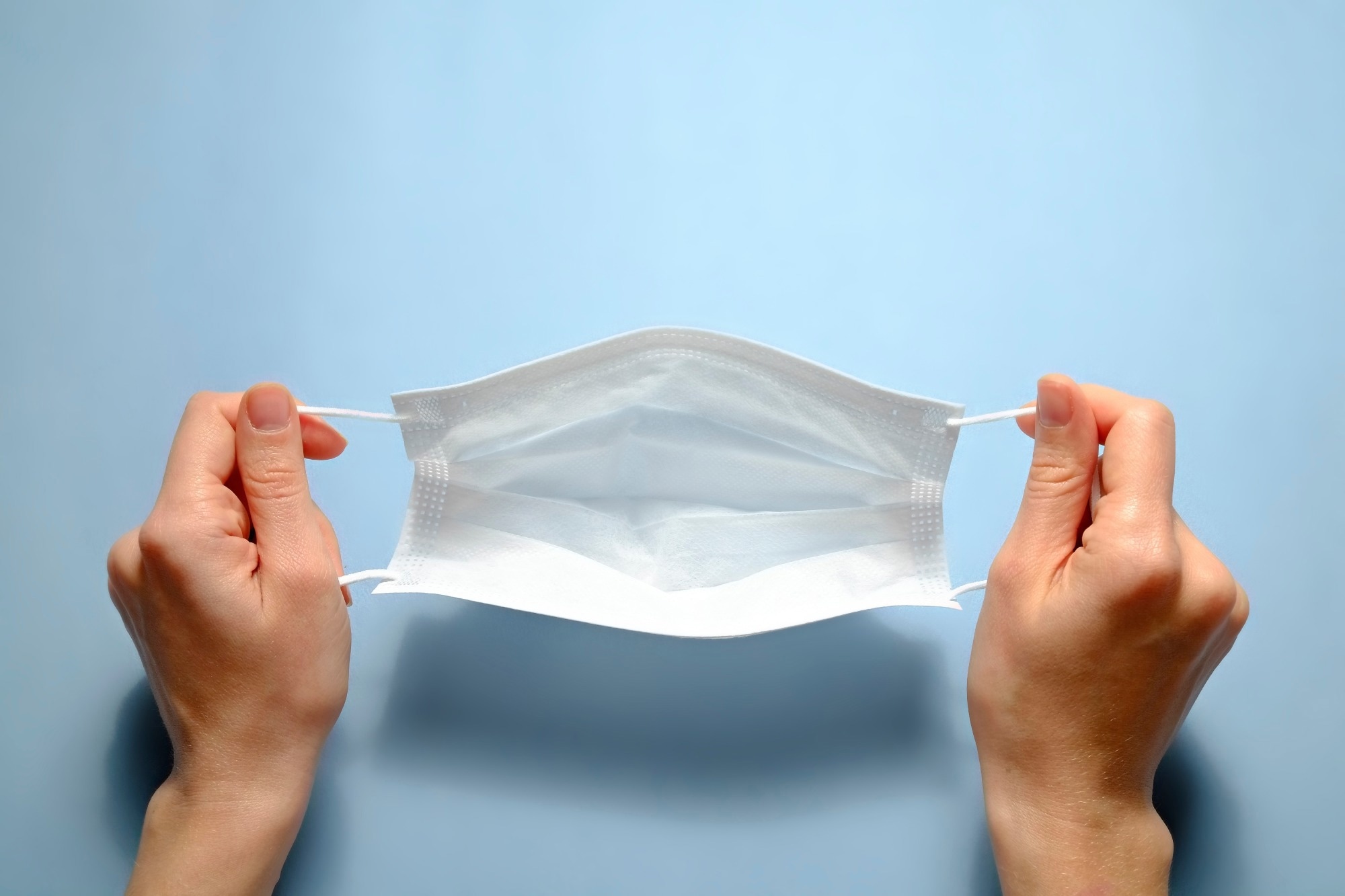A 'Special Communication' article published in the journal JAMA Network Open provides a detailed overview of current high-quality literature describing the utility of face masks in reducing community-level transmission of severe acute respiratory syndrome coronavirus 2 (SARS-CoV-2), the causative pathogen of the coronavirus disease 2019 (COVID-19) pandemic.
 Special Communication: Masks During Pandemics Caused by Respiratory Pathogens—Evidence and Implications for Action. Image Credit: evrymmnt / Shutterstock
Special Communication: Masks During Pandemics Caused by Respiratory Pathogens—Evidence and Implications for Action. Image Credit: evrymmnt / Shutterstock
Background
Non-pharmacological control measures, including face mask-wearing, hand hygiene, physical distancing, and movement restrictions, had contributed significantly towards controlling the COVID-19 pandemic at the initial phase when medicines and vaccines against SARS-CoV-2 were not available in the market.
In this article, scientists have summarized the high-quality data obtained throughout the pandemic regarding the benefits of face mask wearing in reducing the transmission of SARS-CoV-2, a respiratory virus known to spread between humans via large respiratory droplets and small respiratory aerosols.
Randomized controlled clinical trials
Two randomized controlled trials (RCTs) on face mask use in the community were conducted during the COVID-19 pandemic.
The first RCT was conducted in Denmark on 3030 people to investigate the protective efficacy of surgical masks compared to no masks. The findings were inconclusive, with participants from the intervention group (face masking during outdoor activities) showing only a non-significant reduction in the incidence of SARS-CoV-2 infection compared to the control group participants (no masking).
As mentioned by the scientists, other interventions might have diluted the actual effect of masking. Another possibility could be that the detected infections were spread mainly within households, and thus, masking outside the home failed to provide the desirable protection against transmission.
The second RCT involving 600 villages in Bangladesh with more than 340,000 residents found that wearing surgical masks in public places is associated with a modest, statistically significant reduction in symptomatic SARS-CoV-2 infection. Surgical masks were found to be more effective than cloth masks.
A sufficient number of RCTs on mask use could not be done during the pandemic because of ethical and feasibility issues associated with randomizing people to masking or no masking. Moreover, the time needed for designing, funding, and implementing RCTs further restricts their feasibility during the pandemic. Other challenges include a lack of adherence by intervention group participants or the adoption of masking habits by control group participants.
Observational studies
There were many high-quality case-control, cohort, and ecological studies conducted to evaluate the benefits of mask-wearing during the COVID-19 pandemic. Developing simulation models of human respiration, scientists showed that cloth masks, surgical masks, and N95 respirators are highly effective in reducing the transmission of infectious respiratory droplets or aerosols.
Further evidence indicated that the protection against viral transmission is higher when both the source (infected person) and the exposed person are masked and that N95 respirators have higher protective efficacy than surgical masks because of higher filtration efficiency.
Observational studies have also highlighted the protective efficacy of masking in aircraft, schools, households, and communities. Aircraft, where people stay in close proximity for a prolonged period in a poorly ventilated condition, serve as a potential hub for respiratory virus transmission. An outbreak of COVID-19 had occurred on the USS Theodore Roosevelt aircraft carrier in the early phase of the pandemic. A 30% lower risk of SARS-CoV-2 infection was observed among people wearing masks during the journey.
In observational studies, a significant problem is the influence of confounding factors on the study intervention. In many COVID-19 outbreak conditions, masking was not the only implemented public health measure. This issue was addressed in studies by analyzing the outcomes after adjusting for other interventions (hand hygiene, isolation, physical distancing) or demographic features that may influence the infection risk.
Stratified analyses conducted in some studies indicated that the impact of masking on infection transmission depends on the patterns of use, populations, and settings. In households, favorable outcomes were observed when the masking was performed in days before the onset of symptoms in the index case. This highlights the efficacy of masking in preventing asymptomatic infection transmission.
Overall, the findings of observational studies revealed comparatively higher effectiveness of masking among unvaccinated people, as well as in outdoor conditions.
Mask mandates
The impact of mask mandates on infection transmission was analyzed in many studies. In Germany, mask mandates at different times during the pandemic were found to be associated with a 45% reduction in the incidence of SARS-CoV-2 infection. A matched cohort analysis of more than 400 counties in the United States showed a 25% reduction in SARS-CoV-2 infections four weeks after the mask mandate.
At the initial phase of the pandemic, there was a concern that community members who wear masks may develop a false sense of security and, thus, may avoid practicing other public health measures. However, no scientific evidence is there in support of this issue.
A large pool of studies has shown that masking is a better option than school closure in terms of controlling infection spread among students and that school closure can have more negative impacts on students' overall health and well-being.
Overall, the studies on mask use during the COVID-19 pandemic highlight that face masking is an effective public health measure in controlling the transmission of SARS-CoV-2. This information could be helpful for the preparedness of future epidemics or pandemics caused by respiratory viruses.